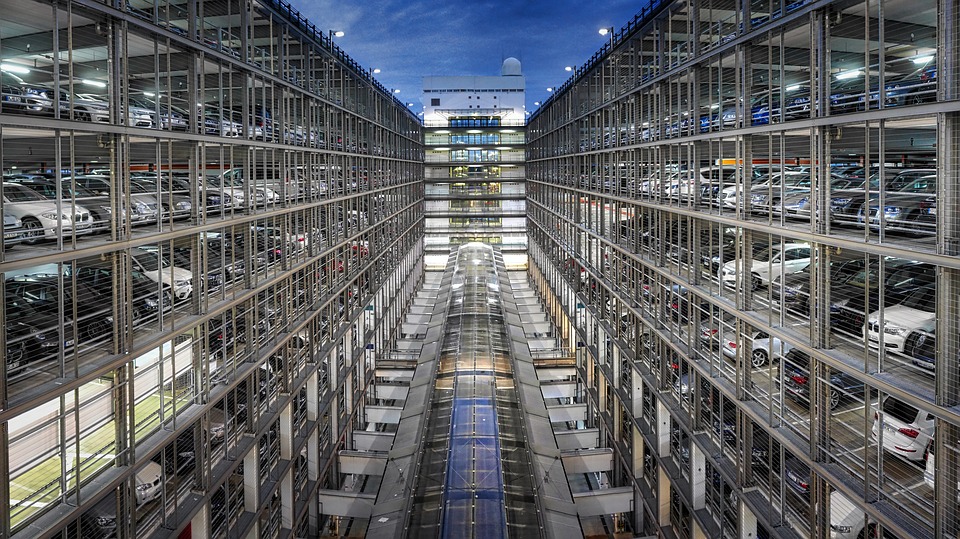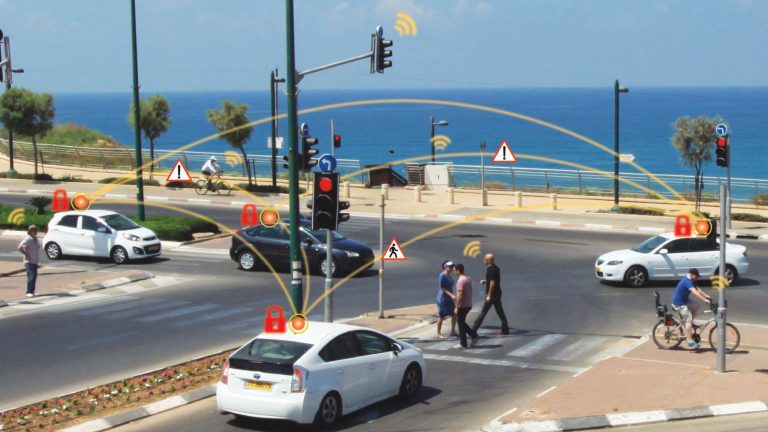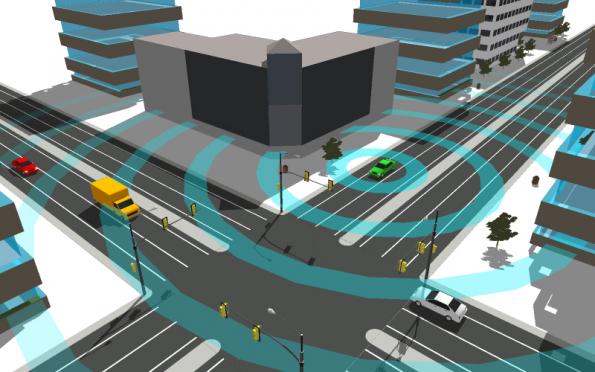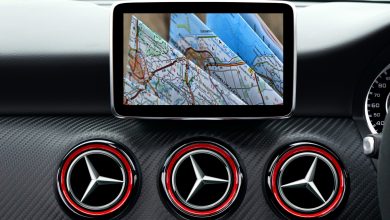
Long gone are those days when talking cars were seen in animation films such as ‘Cars.’ With the development of technology you can now see these cars on road, well almost. Automobile giants have come up with cars that can communicate with each other as well as with the road ahead.
Though this is at its budding stage, major car manufacturers in the US as well as the US government are now researching seriously on technologies that will enable them to design such cars in a large scale.
With the use of these technologies and the ability of the future cars to communicate with each other on the road as well as with the objects around them, accidents and deaths can be prevented, which is one of the prime concern of the government.

Rise of V2V technology
The vehicle to vehicle communication or V2V is a developing technology which has a lot of prospects and will provide a lot of benefits to the drivers as well as the passengers.
- Imagine you are approaching an intersection when you suddenly see another car running a red light but when you do you have very little time to react.
- With this technology in your car you can be safe and prevent hitting the other car or being hit by it because your car will get the signal from the other car even if you do not see it at first that it is directly in your path.
- This signal will warn you about the potential collision and suggest you to hit the brakes, if it cannot hit the brakes automatically itself, to avoid an accident.
It is really fascinating, isn’t it? Well, this technology of Vehicle-to-Vehicle communicationis now being tested by automotive giants such as Ford and others with intent to reduce the number of car accidents on the road.
How V2V works
The working process of V2V is complex but it seems to be very simple due to the advanced technology and sophisticated software installed in the car.
- It ideally uses wireless signals for sending information between cars back and forth
- It tells about the speed, position and the direction of the cars respectively
- This signal is then transferred to all the cars surrounding it.
This process provides the car drivers with all the necessary info that will help them to keep their respective vehicles at a safe distance from the other cars around.

About the V2V algorithm
It is all about the V2V algorithm that the engineers are now working on to make it better and more effective. This algorithm helps in several ways such as:
- It helps in gathering and calculating information from all the cars around and
- It also helps the cars to decide the best evasive measures to be taken should another car starts to come into the projected path of it.
The potential of such an advanced algorithm is huge and according to a study put out by the National Highway Traffic Safety Administration in 2010 and Green Car Congress it is revealed that the V2V technology or the algorithm in particular can reduce more than 79% crashes of the target vehicles on the road.
V2I technology
In addition to the V2V communication, the researchers are also considering the vehicle-to-infrastructure or V2I communication as well. They are testing V2I technology for its ability in allowing the cars to know about any object on the road such as:
- A blockade
- A road sign or
- A traffic signal.
When these objects are encountered, this technology provides the necessary information to the cars regarding the safety issues. In addition to that the V2I technology can also request for any traffic information necessary from the traffic management system. It also has the ability to access the routes that are available and best possible one to avoid any safety issues.
According to the reports of the NHTSA it is said that by incorporating such V2I technology in cars in addition to the V2V systems, it will reduce the possibilities of crashes of all of the target vehicles by 81%.

Importance of V2V and V2I
The development of technology has helped all sectors of business across all industries. You will see technology is being used in construction of buildings and roads, commerce and finance, sports and entertainment, art and cultural presentation and almost everywhere. All you need to do now is swipe a couple of times and your smart phone screen will show the required info you want, whether it is about debt settlement reviews or a complex subject about your research.
Automotive industry is surely not the one to be left behind. In fact, it is the first one to use technologies that are innovative and mostly unbelievable and you usually see in those science fiction films made in the Hollywood. V2V and V2I technology is another first used by them not only to impress the world but also to chance the future of car driving, especially when it comes to the safety aspect on the roads.
- Both these V2V and V2I technologies will surely transform car driving in the future and in turn will increase the automotive safety aspect dramatically. It is for this good reason that both the government as well as the car companies is already working together to find a way to make this ‘dream’ a reality.
- Both these technologies will provide preemptive vehicle assistance with effective and fast communication between two or more vehicles on the road that will lead to less car accidents and deaths.
The applications of these two technologies are facilitated by the interaction between the software installed in the cars and the sensors installed on the road.This integration provides warning regarding hazardous situations such as obstacles, congestions, and accidents providing the drivers with assistance to ensure intersection safety and speed management.
The efficiency of these technologies is beyond thinkable limits as these can operate locally and also on a large network to enhance traffic efficiency with traffic jam notification of current and potential ones ensuring dynamic traffic control with connected navigation.



